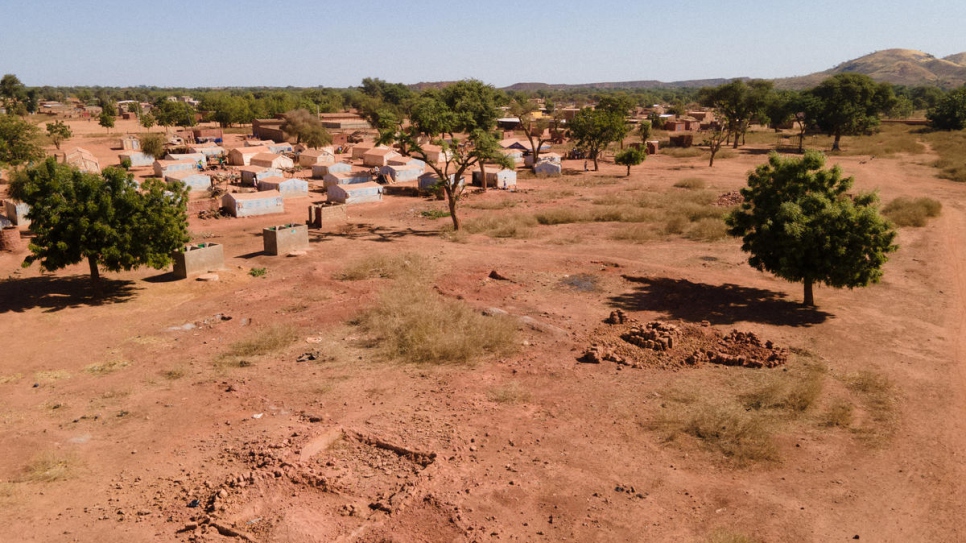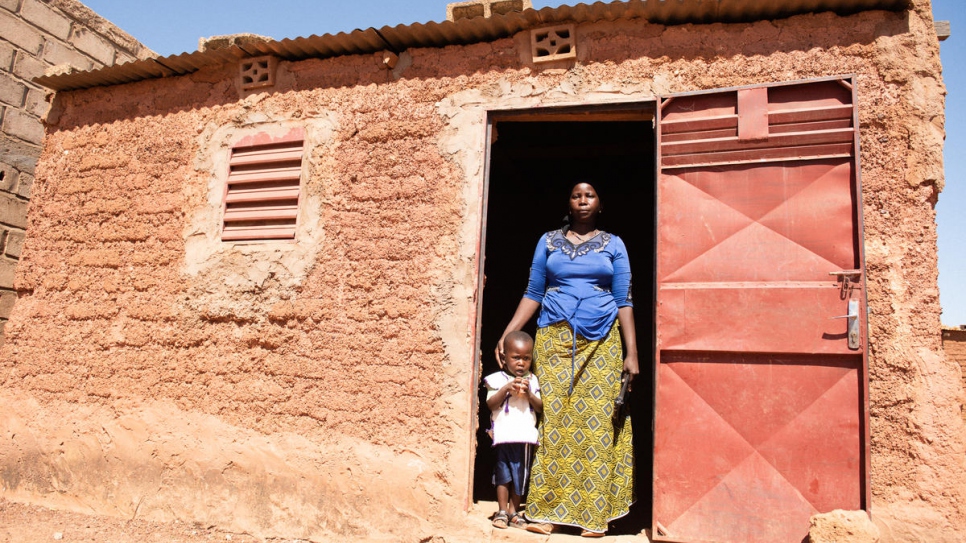Sambo Maiga, 49, fondly remembers the wide stretch of land he used to tend in the Burkina Faso village of Taouremba in the Sahel region. His six-hectare farm, with its flocks of sheep and goats, and its crops of millet, sorghum and sesame, had sustained his family for half a century.
That began to change about nine years ago when he could no longer rely on the seasonal rains. While he knows little about the science of climate change, he recalls what happened to his farm: the shea and acacia trees died, the grass where his animals grazed dried up, and the yields from his fields became ever more meagre.
After an unsuccessful attempt in 2018 to search for better opportunities in neighbouring Côte d’Ivoire, Maiga returned home. Not long afterwards, armed men gunned down members of a local volunteer defense force in Taouremba and Maiga fled with his two wives and 12 children. Since then, the family has moved from town to town in search of safety.
"The land isn't fertile like it was before."
“The land isn’t fertile like it was before,” said Maiga, sitting next to a stand where he sells biscuits and cigarettes in the city of Kongoussi, in the Centre-North region.
His wives and children potter around outside the hard, plastic shelter UNHCR, the UN Refugee Agency, gave the family after unseasonably heavy rains in April swept away their tent and belongings. The temporary homes of around 80 displaced families in the city were destroyed during the floods.
“Thank God no one died,” Maiga said.
But with the family’s flock of sheep and goats reduced from 35 to two by a lack of adequate food, all the children out of school, and no land to cultivate, Maiga is weighed down by worries.
“There is nothing here that I can do to sustain my family,” he said.
While analysts are hesitant to draw direct links between climate change and the ongoing conflict in Burkina Faso, some of the worst violence and displacement has occurred in the poorest, most drought-affected areas where armed groups have exploited tensions over access to dwindling water sources and shrinking arable land.
The majority of the over one million people displaced within the country have both come from and settled in the drought-hit Sahel and Centre-North regions, according to government data.
“Competition for scarce natural resources can damage peaceful coexistence and can lead to further instability,” notes Shelubale Paul Ali Pauni, UNHCR’s Representative in Burkina Faso.
Lassane Sawadogo, a lecturer in geography at the University of Ouagadougou said that worsening soil quality and changing rainfall patterns were making it more and more difficult for farmers to sow and cultivate crops.
“The rainy season used to start in June; now it really starts at the end of July,” he said.
When the rains finally arrive, they tend to be more intense than in previous years. The heaviest rains in over a decade caused devastating floods across the Sahel in August and September.
In Burkina Faso, where vacant land is becoming increasingly scarce in urban areas, displaced people forced to settle in floodplains were particularly hard hit.
The outline of the tiny shelter Mamouna Ouédraogo and her husband had cobbled together in the city of Kaya, 60 kilometres south-west of Kongoussi, is still visible amongst a cluster of makeshift shelters strung together with wood and UNHCR tarpaulins.
In September, the flimsy home they had erected on flood-prone farmland collapsed during the heavy rains and the family’s belongings were swept away. They now struggle to pay the 3,500 CFA (US$6.40) monthly rent for a small mud house with a dirt floor.
UNHCR is helping displaced families to be better prepared for severe weather by reinforcing existing shelters with sandbags and plastic sheeting and providing emergency shelters like the one Maiga and his family now live in. The agency is also advocating for the relocation of families living in flood-prone areas to safer places.
In addition, there are plans to build more durable shelters that are better suited to the local climate using traditional construction materials, such as mud. Gas is also being distributed to limit the impact on the local environment through the collection of firewood.
Ouédraogo, a mother of seven, was shocked by the heavy rains. As a farmer who grew maize, millet and peanuts in her hometown of Daké in the municipality of Dablo, some 86 kilometers south of Kaya, drought had affected her yield for several consecutive years.
"Five years ago, you could start to feel a change in the climate."
“It doesn’t rain much anymore,” she said. “Five years ago, you could start to feel a change in the climate.”
Food and water shortages were starting to cause tensions in her community before gunmen on motorcycles barreled through Daké’s main market in July 2019, shooting indiscriminately. Ouédraogo and her family loaded their belongings on a donkey cart and fled to Dablo town, seven kilometers away.
But only a few weeks later, Dablo itself became the target of several deadly attacks, including on churches and mosques, and Ouédraogo fled with her family once again.
Like Maiga and his family, they were pushed by violence and hunger from town to town, before settling in Kaya. Now, Ouédraogo knocks on doors throughout the city offering to wash people’s clothes for small change, while her 18-year-old daughter sells rice by the side of the road. Her husband is trying his luck at an artisanal mining site four hours away by road.
“If I can’t get enough work we suffer,” she said. “The children don’t understand what is happening and why they don’t have enough food.”
As the security situation deteriorates, and people continue to flee from rural areas where they could grow their own food, the displaced are increasingly vulnerable to food shortages. Some 3.3 million people out of a population of nearly 20 million are now facing a food crisis.
A joint report by the UN’s World Food Programme and the Food and Agriculture Organization warned in November that Burkina Faso was one of four “hotspot” countries where a “toxic combination of conflict, economic decline, climate extremes and the COVID-19 pandemic” was driving people towards famine.
Back in Kongoussi, Maiga’s wives often complain about the 13-kilometre journey they have to make on foot to fetch firewood for cooking. It has been two years since they left Taouremba, and the future remains uncertain.
“How can the future be good if you have no work,” Maiga said. “I can see my family suffering, but I can’t do anything for them.”
Similar situations are playing out elsewhere in the Sahel, a vast region spanning several West African countries where the UN estimates that close to 80 per cent of farmland is degraded and temperatures are rising 1.5 times faster than the global average. Disputes between pastoralists and farmers over diminishing natural resources have increased over the past decade.
The region is now home to one of the world’s fastest growing displacement crises with over 850,000 people having fled violence across borders – often escaping one conflict only to find themselves caught up in another, and more than two million people displaced within their own countries, including over one million in Burkina Faso alone.





